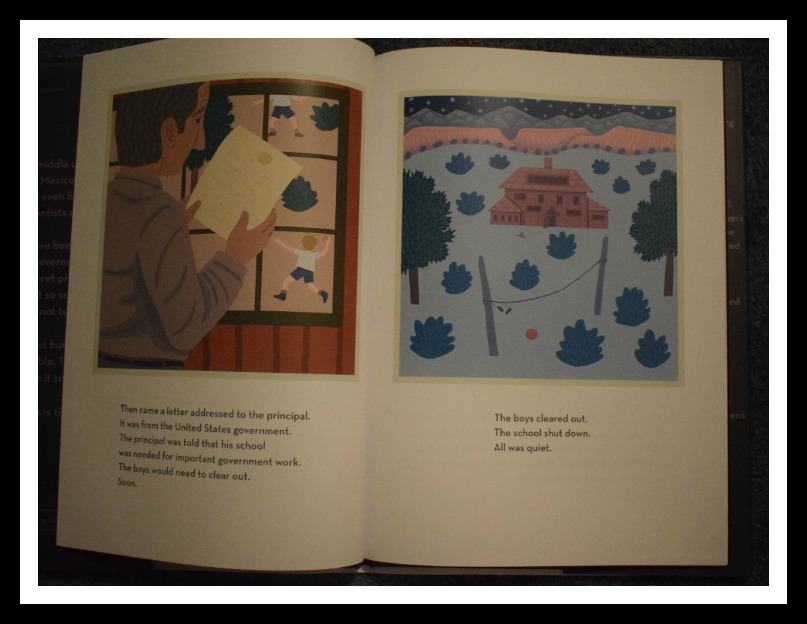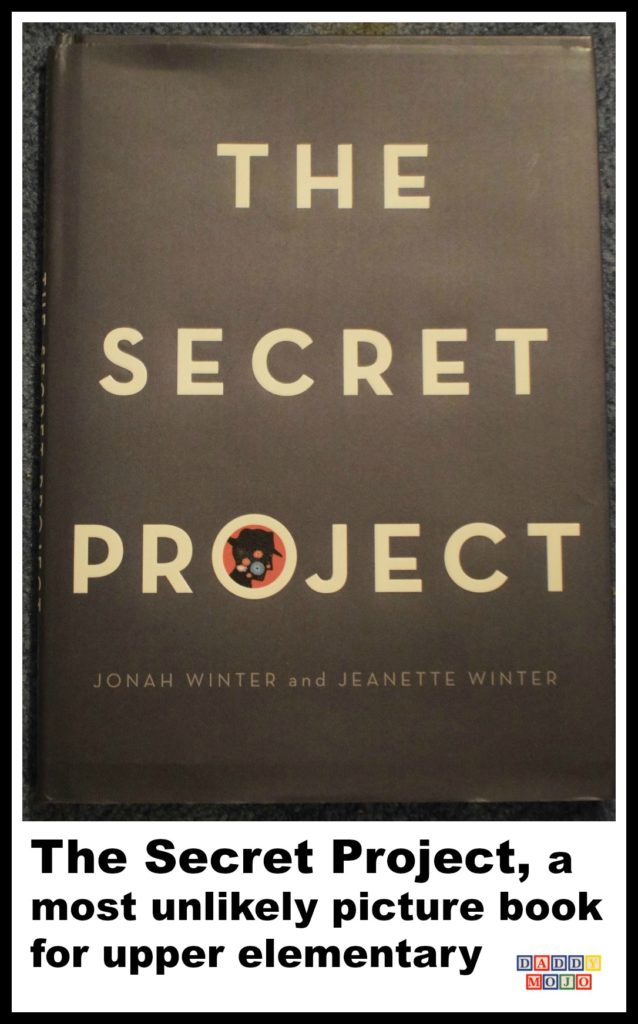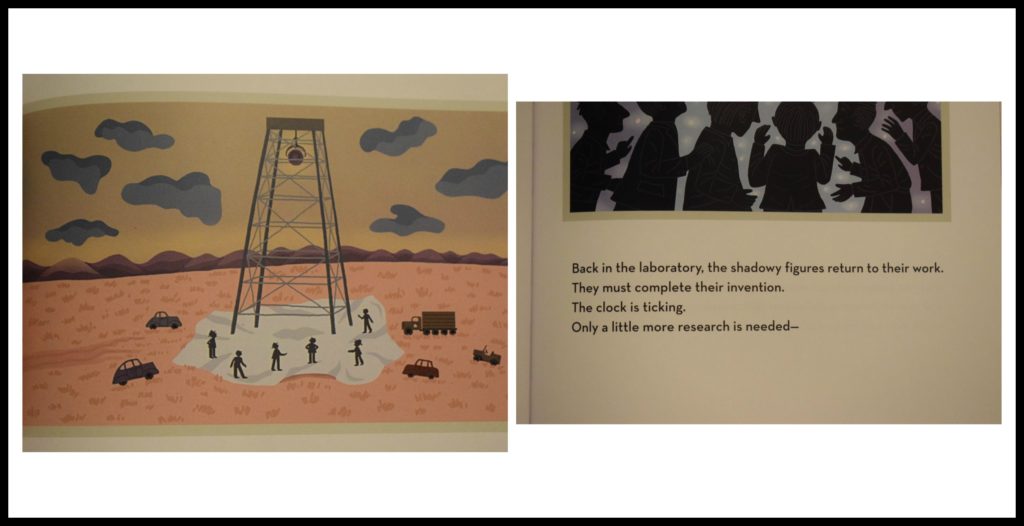Imagine a book written about the most destructive thing that man has ever created. Now imagine a book written about a device that saved the lives of hundreds of thousands of lives and ended a world war. Depending on your perspective, both situations are correct in one of the most unlikely picture books you’ll ever read. The Secret Project is the story about the scientists that worked under deep secrecy to create their ‘gadget’, the Atomic Bomb.
The vocabulary in The Secret Project is on par with something that third grade and up will be able to easily read. It’s presented in a way that does not glamorize the research or test, but does let young readers know that what they were doing was special and ground breaking. Each page has illustrations that are drawn with a south western feel that tell the story of the researchers, the secrecy, how they lived and the ultimate preparations that went into testing the bomb on The Trinity Test on July 16, 1945.
The illustrations build up to a crescendo explosion followed by two black pages. Immediately after that there are some very detailed author’s notes that spell out its history, key players and a snapshot of the chase to be the first country to split the atom.
Upper elementary school students who have started studying World War II will find new areas of interest when they read The Secret Project. By then they might be familiar enough with social studies to have the geography and historical lessons presented in a different manner. The Secret Project is a fascinating book that will lead to some good discussions with young readers about history, war and conflict. This is a children’s history picture book about war, without directly showing the bodies or physical violence associated with it. That’s a fascinating dichotomy that The Secret Project manages to straddle very well. It’s not the kind of children’s book that kids will want to read over and over, but it certainly provides a topic that they need to talk about in a way that they’ll want to.







 Facebook
Facebook Twitter
Twitter Flickr
Flickr GooglePlus
GooglePlus Youtube
Youtube